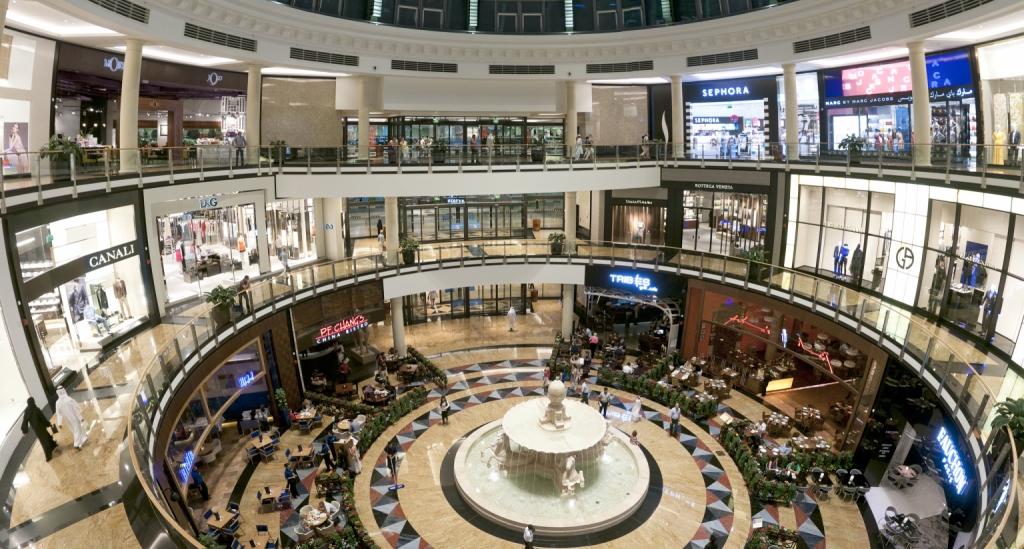
Retail therapy pushes hotel ADR up 25%
UAE leads the region in retail tourism, with Mall of the Emirates alone attracting 56 new hotels into its vicinity over the last 10 years
Hotels developed in and around the region’s shopping malls can expect to post an Average Daily Rate (ADR) 25% higher than hotels that are not co-located with a major retail development.
The findings are published in a report by Colliers International, released ahead of Arabian Travel Market 2017, which takes place 24 – 27 April at Dubai World Trade Centre.
As part of its experiential travel series, Colliers concluded that hotels such as those clustered around Dubai’s Mall of The Emirates and The Dubai Mall, enjoy stronger business performance overall – not only beating seasonal fluctuations in tourist arrivals, but contributing in the drive to attract more tourists over the traditionally quiet summer season.
Simon Press, Senior Exhibition Director, Arabian Travel Market, said: “In the UAE, the idea of a combined retail, leisure and entertainment destination has really taken off. We have hotels attached to malls and, as such, these are much sought after properties. There is massive demand for urban tourism from Indian, Arab and Chinese visitors.
“Since the opening of Mall of the Emirates in 2006, the number of hotels and serviced apartments in the area has risen from four to 58 in 2017, totalling 8,654 keys. While only two of these hotels are physically part of the mall building, the remaining 56 have also demonstrated strength across all performance metrics.”
For retail tourists, shopping malls and the facilities they feature – from indoor ski slopes to aquariums – form an integral part of trips to the UAE. Hotels capitalise on this by offering promotional packages and free transportation, as well as cross marketing discounts and free vouchers with retail partners.
“The theme behind Arabian Travel Market 2017 is experiential travel and that brings with it a desire for bigger and more compelling experiences. The retail landscape of the GCC and UAE in particular, certainly performs in line with this,” added Press.
It is noticeable the number of shopping malls/entertainment centres now exhibiting at ATM. This year we have 401, including: Al Shaab Village, Sharjah; Chic Outlet Shopping; Fashion Arena Prague Outlet; Freeport Lisboa Fashion Outlet; Istanbul Shopping Fest; La Roca Village in Barcelona and Las Rozas Village in Madrid; and Westfield Europe Ltd.
The UAE has the strongest retail tourism sector in the region and Dubai takes the lead among the seven emirates – with retail accounting for more than 40% of total tourism spending.
According to Press, Dubai’s strength has been underlined over recent years with the introduction of retail events throughout the year, including Dubai Shopping Festival and Dubai Summer Surprises.
He said: “Not only are we seeing more mega-retail developments with onsite hospitality facilities, but we are seeing more and more packed into these malls, adding to the excitement in this sector. The regional retail industry is incredibly innovative. The evolution of shopping malls into leisure and entertainment destinations in their own right has brought huge value to the tourism industry and, as a result, local hotels too.”
While Dubai and Abu Dhabi have more than 626,887 sq. m. of retail space currently under development, other major GCC cities are also looking to replicate the success with Muscat, Riyadh and Doha all currently engaged in similar retail projects.
In Oman, Muscat’s seasonal tourism industry will receive a boost from the development of Palm Mall, which will span 157,000 sq. m. upon completion later this year. In line with the trends identified by Colliers, the mall will feature the Oman Aquarium, an indoor snow park, cinemas, food courts, an amphitheatre and a hypermarket.
Muscat’s second major retail development, Al Araimi Boulevard Mall, which covers 128,000sqm will feature a dedicated kids’ zone, hypermarket, fashion brands and F&B outlets.
In the capital of Saudi Arabia, where mega-malls have already become commonplace on the fast-changing skyline, two mega-projects planned in Riyadh over the coming years. The first, to be completed in 2018, will be Mall of Arabia, with a Gross Leasable Area (GLA) of 167,000sqm and highlights including landscaped gardens, water features, retail stores and a co-located hotel.
This will be joined by the first phase of Mall of Saudi in 2022, with GLA of 300,000sqm, comprising shops, restaurants, entertainment areas, offices, a hotel and indoor ski facilities similar to those seen in the UAE.
Qatar’s retail landscape is also taking shape following the launch of the 500,000sqm Mall of Qatar in 2016, while this year will see the opening of Doha Festival City which will be home to four theme parks and entertainment concepts, plus 500 stores and a luxury hotel.
Press said: “Whether it is in the number or size of malls, or through the introduction of big name F&B outlets, cinemas and other attractions, we now see more UAE and GCC cities following in Dubai’s footsteps. This will mean that hotel operators need to keep a close watch on planned retail developments in order to secure the best locations and capture a wider guest profile.”


























